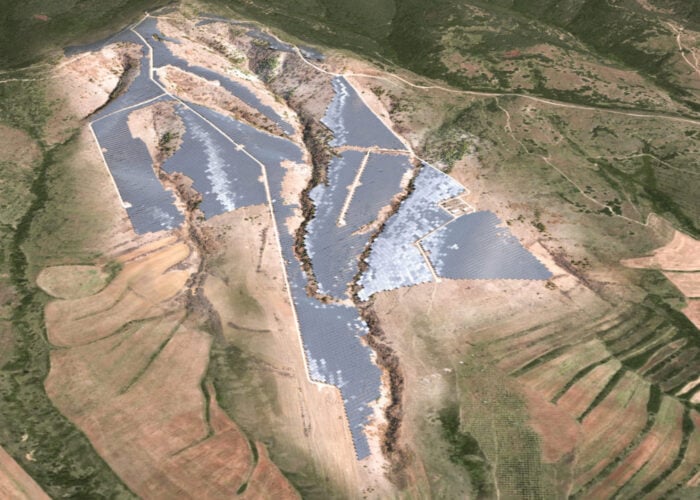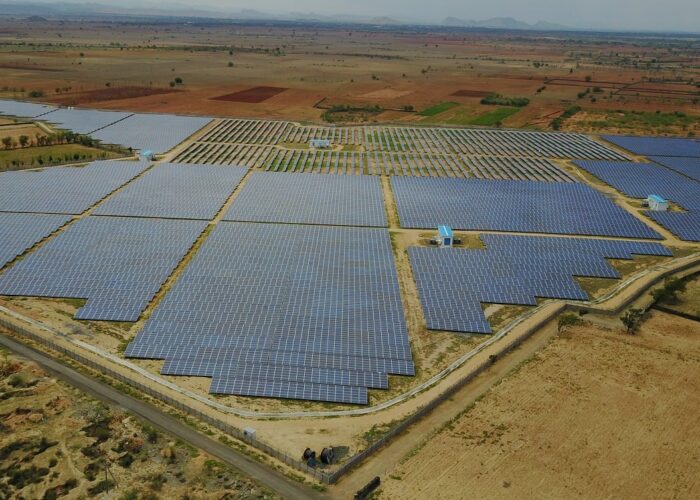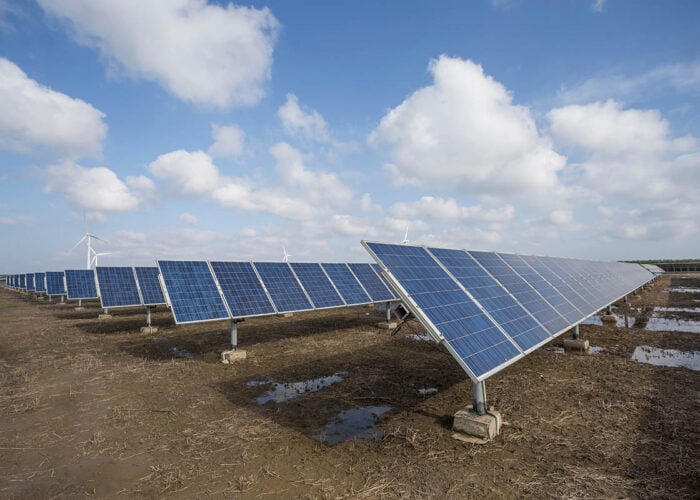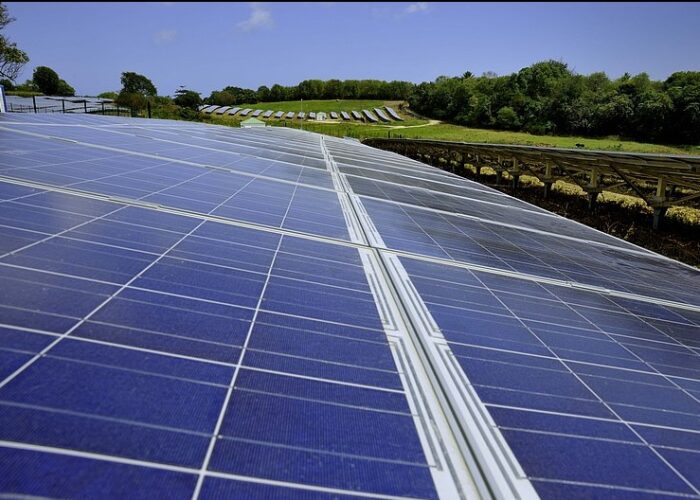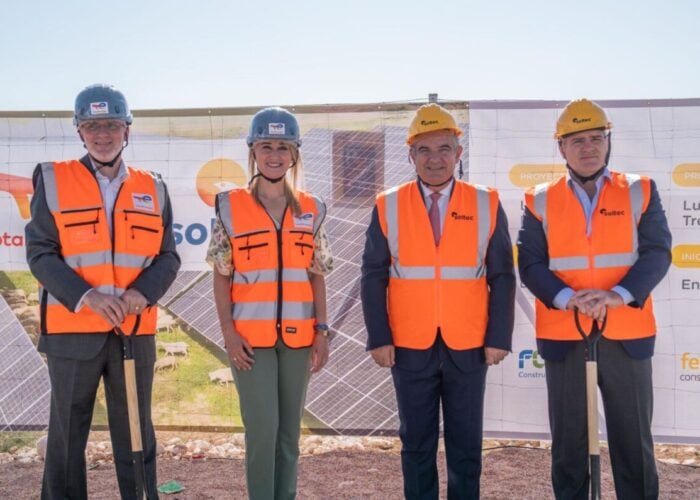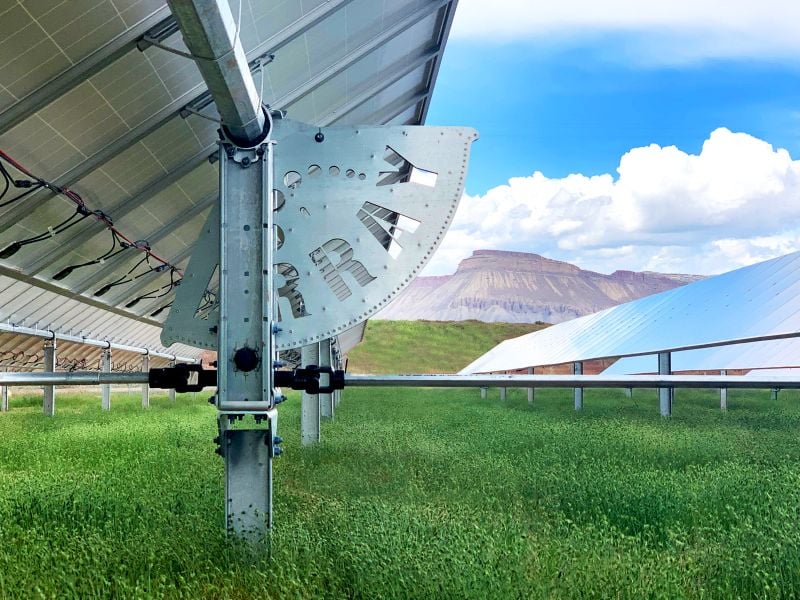
Earlier this month, US tracker supplier Array Technologies bought Spanish tracker manufacturer Soluciones Técnicas Integrales Norland (STI). In doing so, it has formed the “largest tracker company in the world”, according to Array.
It has also, crucially, opened up access to new markets that have been difficult to penetrate because of supply chain issues and local content requirements, says Array’s CMO Erica Brinker.
Unlock unlimited access for 12 whole months of distinctive global analysis
Photovoltaics International is now included.
- Regular insight and analysis of the industry’s biggest developments
- In-depth interviews with the industry’s leading figures
- Unlimited digital access to the PV Tech Power journal catalogue
- Unlimited digital access to the Photovoltaics International journal catalogue
- Access to more than 1,000 technical papers
- Discounts on Solar Media’s portfolio of events, in-person and virtual
PV Tech Premium spoke with Brinker to discuss the deal, its repercussions and what’s in store for ‘the world’s largest tracker company’.
The deal
Array bought a 100% stake in STI for roughly US$652 million (US$401 million in cash and 13.9 million shares of Array common stock), with the transaction expected to close in Q1 2022.
When measured on 2020 order bookings in terms of revenue and installed capacity, this makes Array the largest tracker company in the world, says Brinker. Indeed, the company’s executed contracts and awarded orders stood at US$1 billion on 30 September 2021, “a new record” representing a 35% increase from the same date last year. Brinker says this trend looks set to continue into next year following the acquisition.
She says STI was an ideal purchase as it gives Array access to a range of markets it had its sights on but has struggled to make inroads into. “It’s been no secret that we’ve been trying to expand more internationally,” she says, “our mix previous to this acquisition was about 90% North America and 10% rest of world.”
“So, it’s really complimentary from a geography perspective when you think about STI’s business, which is about 95% rest of world,” she explains.
Brinker says Array, which has been planning such an acquisition since its IPO last year, looked at a number of other companies but was impressed by STI’s product compatibility and company culture alongside the geographical advantages it offers.
Javier Reclusa, CEO of STI, as well as the rest of the company’s senior management team, will remain with Array and continue to lead the company following the acquisition.
Brinker adds that Array has no plans to change STI’s company culture, cut costs, replace personnel or look for immediate integration as the companies both have ambitious targets for 2022.
Its repercussions
The acquisition of STI will result in a number of advantages and synergies for Array, says Brinker.
Firstly, the companies have “very complimentary supply chains at the close of the deal”. STI serves a very different customer base than array, says Brinker, which means the acquisition has massively expanded the company’s customer pool and provided established supply chains for those regions.
That then leads to the next advantage when considering countries’ local content requirements. Lots of countries have local content requirements for solar projects in order to kickstart their domestic solar industries, reduce reliance on foreign imports and generate local employment.
“When you have those supply chains in the country, we’re immediately able to win that business because we’re able to source much of the materials in that country,” Brinker explains.
One such country with local content requirements is Brazil, which Array sees as a key strategic market, although it also has its eyes on Turkey and European countries. “Brazil has certainly proven to be a supportive market, it’s why we were first interested in going there,” Brinker notes.
“And then the opportunity with STI came along and that comes with their established business,” Brinker says. “They have a HQ in Sao Paulo, a production facility in Salvador, again meeting content requirements, and we actually have employees running that business in Brazil today,” she explains, which provides a host of benefits in terms of communication and customer service.
While much of the employee base for STI is in Pamplona, Spain, STI CEO Reclusa is based out of Sao Paulo, she says, adding that Array are approaching STI as both a Spanish and Brazilian company.
She also points to Brazil being a ‘low wind’ solar market where trackers require less steel, making STI’s product perfectly suited to that, and other similar, markets.
On the up-and-up?
Earlier this month, PV Tech reported that Array’s profits plummeted 65% in Q3 amid high material and logistical costs and that it was experiencing a margin “trough”, weighed down by legacy orders signed at low prices.
Brinker says that further guidance will be issued in the company’s Q4 call but told PV Tech Premium that “this was the bottom of the V” and that the company was on a trajectory to come out of that trough.
Meanwhile, Array has a strong M&A pipeline that could further drive its growth, Brinker says, explaining that these companies are not necessarily in the solar tracker sector and that Array is open to complimentary acquisitions and partnerships across adjacent and ancillary markets in the renewable space.
Despite a difficult year in terms of profit margins and supply chain issues, it appears as though Array is on the up-and-up. The STI purchase has expanded its supply chains, given it access to new markets and made it the largest tracker company in the world on certain metrics. And, with a strong M&A pipeline, it could continue to grow yet.

